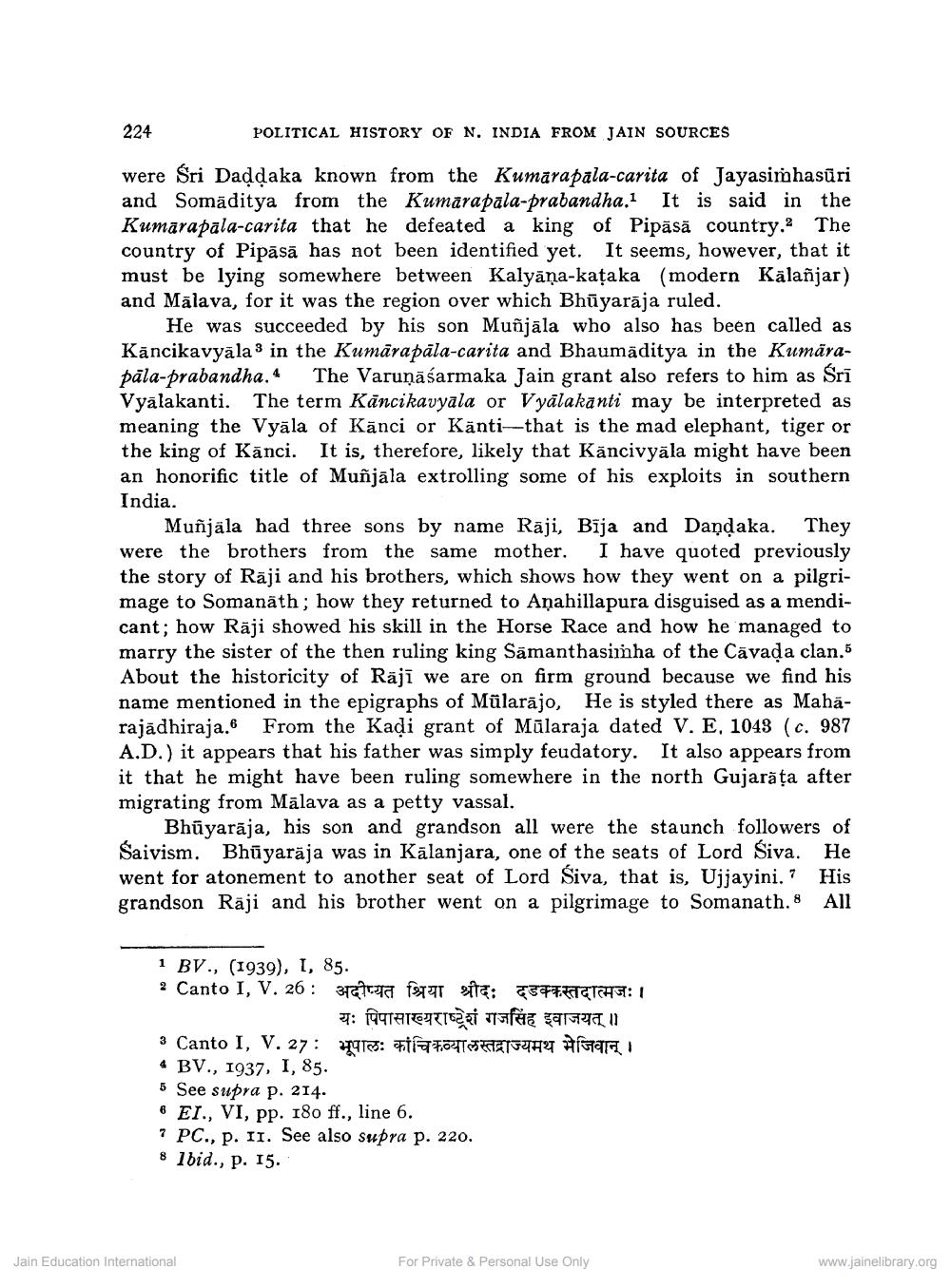________________
224
POLITICAL HISTORY OF N. INDIA FROM JAIN SOURCES
were Sri Daddaka known from the Kumarapala-carita of Jayasimhasūri and Somāditya from the Kumarapala-prabandha. It is said in the Kumarapala-carita that he defeated a king of Pipāsā country. The country of Pipāsā has not been identified yet. It seems, however, that it must be lying somewhere between Kalyāņa-kataka (modern Kälañjar) and Mālava, for it was the region over which Bhūyarāja ruled.
He was succeeded by his son Muñjāla who also has been called as Kāncikavyāla 3 in the Kumārapāla-carita and Bhaumāditya in the Kumārapāla-prabandha. 4 The Varuņāśarmaka Jain grant also refers to him as Sri Vyalakanti. The term Kāncikavyala or Vyalakanti may be interpreted as meaning the Vyāla of Kānci or Känti--that is the mad elephant, tiger or the king of Kānci. It is, therefore, likely that Kāncivyāla might have been an honorific title of Muñjāla extrolling some of his exploits in southern India.
Muñjäla had three sons by name Rāji, Bija and Dandaka. They were the brothers from the same mother. I have quoted previously the story of Rāji and his brothers, which shows how they went on a pilgrimage to Somanāth; how they returned to Anahillapura disguised as a mendicant; how Rāji showed his skill in the Horse Race and how he managed to marry the sister of the then ruling king Sämanthasimha of the Cāvada clan.5 About the historicity of Rājī we are on firm ground because we find his name mentioned in the epigraphs of Mülarājo, He is styled there as Maharajādhiraja. From the Kadi grant of Mūlaraja dated V. E, 1043 (c. 987 A.D.) it appears that his father was simply feudatory. It also appears from it that he might have been ruling somewhere in the north Gujarăța after migrating from Mālava as a petty vassal.
Bhūyarāja, his son and grandson all were the staunch followers of Saivism. Bhūyaraja was in Kālanjara, one of the seats of Lord Siva. He went for atonement to another seat of Lord Siva, that is, Ujjayini.? His grandson Rāji and his brother went on a pilgrimage to Somanath.8 All
1 BV., (1939), 1, 85. 2 Canto I, V. 26: 3fairuta STT TE: 35 FTTETTHET: 1
यः पिपासाख्यराष्ट्रेशं गजसिंह इवाजयत् ॥ 3 Canto I, V. 27: 15: FFTSHEFYHY H EI 4 BV., 1937, I, 85. 5 See supra p. 214. 6 EI., VI, pp. 180 ff., line 6. ? PC., p. II. See also supra p. 220. 8 lbid., p. 15.
Jain Education International
For Private & Personal Use Only
www.jainelibrary.org




